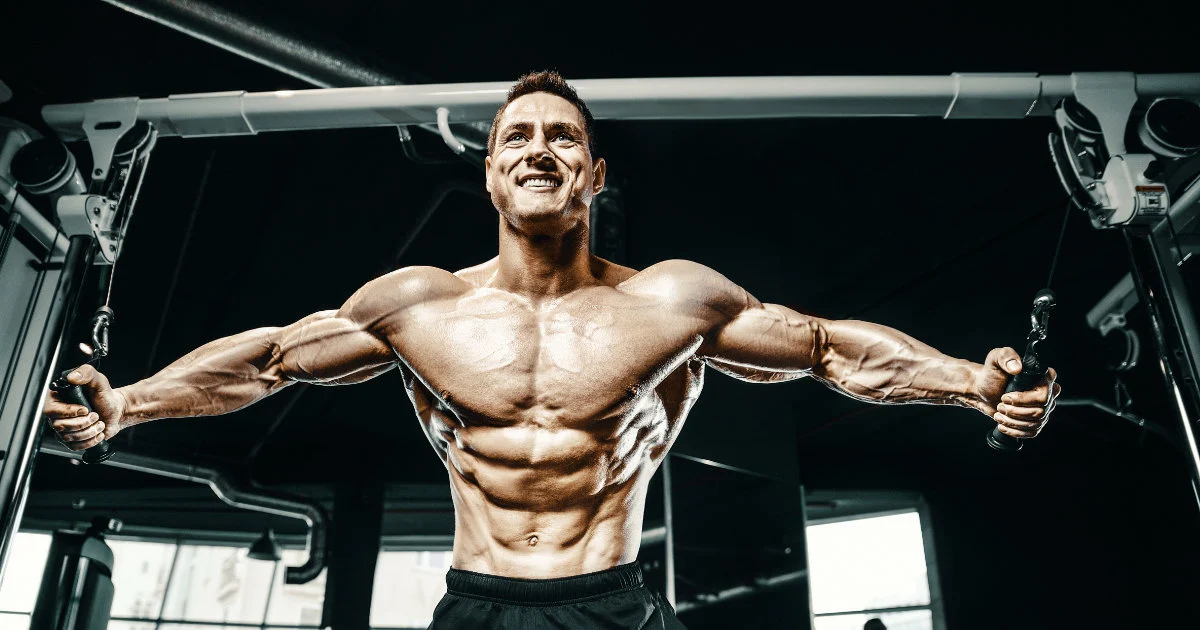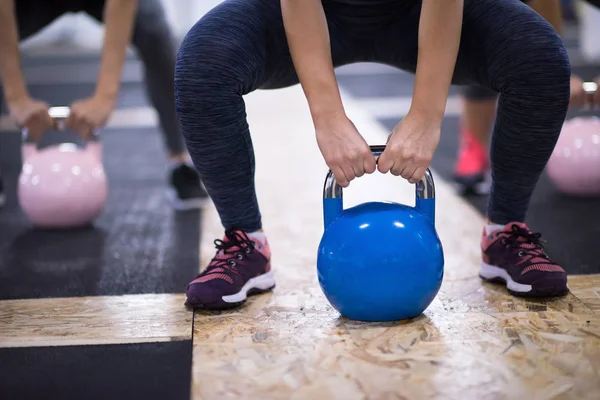Building a well-defined chest requires a comprehensive approach that includes understanding muscle anatomy, implementing effective exercises, and prioritizing recovery. This article provides essential insights into optimizing your chest workouts, from warm-up techniques that prepare your muscles for action to specific exercises that target the pectoral muscles effectively.
Additionally, you will discover crucial recovery strategies that promote muscle growth and prevent injury after your chest day. By following these guidelines, you can enhance your training routine and achieve the results you desire in a structured and informed manner.
In this article you will find:
Understanding Chest Anatomy for Optimal Training
When it comes to building a powerful chest, understanding the underlying anatomy is crucial for effective training. The chest, or pectoral region, consists primarily of two major muscle groups: the pectoralis major and the pectoralis minor. Each of these muscles plays a distinct role in movement and strength, making their understanding essential for maximizing your chest day workouts.
Pectoralis Major: The Powerhouse
The pectoralis major is the larger of the two muscles, spanning the upper chest and connecting to the upper arm bone. This muscle is responsible for several key movements, including:
- Flexion: Lifting the arm forward.
- Adduction: Bringing the arm towards the body.
- Internal Rotation: Rotating the arm inward.
By focusing on exercises that target the pectoralis major, you can enhance strength and size in the chest, leading to a more defined appearance. Key exercises include bench presses, push-ups, and chest flys, which engage this muscle in various ways.
Pectoralis Minor: The Supportive Layer
Located beneath the pectoralis major, the pectoralis minor is a smaller, triangular muscle that plays a supportive role. It helps stabilize the shoulder blade and is involved in movements like:
- Protraction: Moving the shoulder blade forward.
- Depression: Lowering the shoulder blade.
- Downward Rotation: Rotating the shoulder blade downwards.
Although the pectoralis minor is less visible than the pectoralis major, strengthening it is vital for overall shoulder stability and function. Incorporating exercises such as dips and incline presses can effectively target this muscle, enhancing your overall chest development.
Understanding Muscle Fiber Types
Another important aspect of chest training is the recognition of different muscle fiber types within the pectoral muscles. The chest muscles consist of both slow-twitch and fast-twitch fibers, each serving distinct purposes:
- Slow-Twitch Fibers: Ideal for endurance activities, these fibers are more resistant to fatigue and are engaged during lower weight, higher repetition exercises.
- Fast-Twitch Fibers: These fibers are responsible for explosive movements and are activated during high-intensity, lower-rep exercises.
To maximize chest development, it’s essential to incorporate a variety of training modalities. Combining heavy lifting with higher-rep endurance work will ensure that both types of muscle fibers are effectively stimulated, promoting growth and strength.
Importance of Form and Technique
Understanding chest anatomy also emphasizes the importance of proper form during exercises. Incorrect technique can lead to injuries and suboptimal muscle engagement. Here are some key points to remember:
- Alignment: Keep your shoulders back and down to avoid straining the shoulder joints.
- Range of Motion: Ensure full extension and contraction to maximize muscle activation.
- Breathing: Exhale during exertion and inhale during the lowering phase to maintain stability and control.
By prioritizing form, you can ensure that you are targeting the chest muscles effectively while minimizing the risk of injury.
In conclusion, a solid understanding of chest anatomy is fundamental for any fitness enthusiast looking to enhance their chest workouts. Knowing the roles of the pectoralis major and minor, recognizing muscle fiber types, and applying proper form will lead to more effective training sessions. As you gear up for your next chest day, remember that these insights will not only help you achieve killer pecs but also contribute to your overall strength and stability.
For further reading on muscle anatomy and training techniques, check out Bodybuilding.com.
Essential Warm-Up Techniques for Effective Chest Workouts
A proper warm-up is a critical component of any successful workout, especially when targeting the chest muscles. It not only prepares your body for the physical demands ahead but also significantly reduces the risk of injury. In this section, we will explore essential warm-up techniques specifically designed for effective chest workouts, ensuring that your muscles are primed for action.
The Importance of Warming Up
Warming up effectively serves multiple purposes:
- Increases Blood Flow: Gradually raising your heart rate increases blood flow to the muscles, enhancing oxygen delivery and nutrient availability.
- Improves Flexibility: Dynamic stretching helps improve the range of motion, allowing for better performance and reduced injury risk.
- Prepares the Nervous System: Warming up activates the neuromuscular pathways, improving coordination and strength during your workout.
Incorporating a structured warm-up routine tailored to your chest day can set the stage for a productive session. Here are some essential techniques to consider.
Dynamic Stretching Exercises
Dynamic stretching is an excellent way to prepare your chest and surrounding muscles for the demands of lifting. Here are a few key dynamic stretches:
- Arm Circles: Stand with your arms extended at shoulder height. Make small circles, gradually increasing the size. Perform for 30 seconds in each direction to engage the shoulders and chest.
- Torso Twists: Stand with your feet shoulder-width apart and twist your torso from side to side. This movement activates the core and improves spinal mobility, which is crucial for chest exercises.
- Push-Up to Downward Dog: Start in a push-up position. Lower yourself into a push-up, then push back into a downward dog position. This exercise warms up the chest, shoulders, and core effectively.
Specific Warm-Up Sets
After dynamic stretching, performing specific warm-up sets with lighter weights is essential. This method helps prepare your muscles for the heavier loads you will encounter. Here’s how to structure your warm-up sets:
- Choose Your Main Exercise: For instance, if you plan to bench press, start with the same movement using a lighter weight.
- Perform Multiple Sets: Begin with 1-2 sets of 10-15 repetitions using about 50% of your working weight. This helps to activate the muscle fibers without causing fatigue.
- Focus on Form: Use these warm-up sets to refine your technique. Pay attention to your grip, stance, and breathing to ensure proper execution during your main workout.
Activation Drills for the Chest Muscles
Incorporating activation drills into your warm-up routine can enhance muscle engagement during your workout. These exercises are specifically designed to “wake up” your chest muscles:
- Chest Fly with Resistance Bands: Use a resistance band to perform chest fly movements. This exercise activates the pectoral muscles and improves their responsiveness to heavier lifts.
- Pec Deck Machine:** If available, a few light sets on the pec deck machine can effectively isolate and activate the chest muscles.
Cool Down and Stretching
After your workout, it’s important to cool down and stretch the chest muscles. This practice promotes recovery and flexibility:
- Static Chest Stretch: Stand in a doorway, place your arms on the door frame, and lean forward gently. Hold for 20-30 seconds to stretch the chest muscles.
- Child’s Pose: This yoga position helps to relax and stretch the chest and shoulders after a strenuous workout.
Implementing these warm-up techniques into your chest day routine will not only enhance your performance but also contribute to long-term muscle health. As you prepare for your workout, remember that a well-structured warm-up is key to unlocking your full potential.
For more insights on effective warm-up techniques and training strategies, visit ACE Fitness.
Top Three Exercises for Building Killer Pecs
To achieve a well-defined chest, it’s essential to incorporate effective exercises that target the pectoral muscles from various angles. The following three exercises are proven to build strength and size in your pecs, ensuring that your chest day delivers maximum results.
1. Barbell Bench Press
The barbell bench press is often regarded as the king of chest exercises, and for good reason. This compound movement engages the entire chest, shoulders, and triceps, making it a staple in any chest workout routine.
- How to Perform: Lie flat on a bench with your feet firmly planted on the ground. Grip the barbell slightly wider than shoulder-width apart. Lower the bar to your chest, keeping your elbows at about a 75-degree angle, and press it back up to the starting position.
- Benefits: This exercise not only builds overall chest mass but also enhances upper body strength and stability. It allows you to lift heavier weights, promoting muscle growth effectively.
- Variations: Consider using a smith machine for added safety, or switch to incline and decline benches to target different areas of your chest.
2. Dumbbell Flys
Dumbbell flys are a fantastic isolation exercise that helps stretch and activate the pectoral muscles. This movement focuses on the outer part of the chest, promoting a fuller appearance.
- How to Perform: Lie on a flat bench with a dumbbell in each hand, arms extended above your chest. With a slight bend in your elbows, lower the dumbbells out to the sides in a wide arc until you feel a stretch in your chest. Bring the weights back together over your chest, squeezing your pecs at the top.
- Benefits: This exercise enhances muscle definition and increases flexibility in the chest. It also helps improve the mind-muscle connection, which is crucial for effective workouts.
- Variations: To target different areas, try incline or decline dumbbell flys, adjusting the bench angle accordingly.
3. Push-Ups
Push-ups are a classic bodyweight exercise that can be performed anywhere, making them an excellent addition to any workout routine. They effectively engage the chest, shoulders, and triceps while also activating the core.
- How to Perform: Start in a plank position with your hands shoulder-width apart. Lower your body until your chest nearly touches the floor, keeping your elbows close to your body. Push back up to the starting position.
- Benefits: Push-ups not only build strength and endurance in the chest but also improve overall body stability. They can easily be modified to suit different fitness levels, making them accessible for everyone.
- Variations: For added challenge, try incline push-ups, decline push-ups, or add a weighted vest to increase resistance.
Incorporating these three exercises into your chest day routine will ensure that you are effectively targeting all areas of the pectoral muscles. Remember to focus on form, control, and the mind-muscle connection to maximize your gains.
For more detailed workout strategies and tips on building muscle, check out Men’s Health.
Tips for Recovery and Growth After Chest Day
After an intense chest workout, proper recovery is essential for muscle growth and overall performance. The recovery phase allows your muscles to repair, rebuild, and grow stronger. Here are some effective tips to ensure you maximize your recovery and promote growth after your chest day.
1. Prioritize Nutrition
Your body needs the right nutrients to recover effectively after a workout. Focus on consuming a balanced diet that includes:
- Protein: Essential for muscle repair. Aim for high-quality protein sources such as chicken, fish, eggs, and legumes. A post-workout protein shake can also be beneficial.
- Carbohydrates: Replenish glycogen stores depleted during your workout. Opt for complex carbohydrates like whole grains, fruits, and vegetables.
- Healthy Fats: Incorporate sources of healthy fats, such as avocados, nuts, and olive oil, which support overall health and recovery.
Consider following a post-workout meal that includes a combination of protein and carbohydrates to kickstart the recovery process within 30 to 60 minutes after your workout.
2. Hydration is Key
Staying hydrated is crucial for optimal recovery. Water plays a vital role in:
- Regulating Body Temperature: Proper hydration helps maintain your body temperature during exercise.
- Transporting Nutrients: Adequate fluid intake aids in the efficient transport of nutrients to muscle cells.
- Reducing Muscle Soreness: Staying hydrated can help alleviate post-workout soreness and stiffness.
Make sure to drink water before, during, and after your workout. For intense sessions, consider electrolyte-rich drinks to replenish lost minerals.
3. Incorporate Active Recovery
Active recovery involves engaging in low-intensity activities that promote blood flow without adding extra strain on your muscles. Some effective active recovery methods include:
- Light Cardio: Activities such as walking, cycling, or swimming can aid in recovery by increasing circulation to the muscles.
- Stretching: Gentle stretching exercises can enhance flexibility and reduce muscle tightness after a workout.
- Foam Rolling: This technique can help relieve muscle tension and improve recovery by increasing blood flow to sore areas.
Incorporate active recovery days into your weekly routine to enhance muscle recovery and prevent burnout.
4. Get Adequate Rest
Sleep is one of the most critical components of recovery. During sleep, your body undergoes vital processes that aid in muscle repair and growth. To optimize your recovery:
- Aim for 7-9 Hours of Sleep: Ensure you are getting enough quality sleep each night to allow your body to recover effectively.
- Establish a Sleep Routine: Going to bed and waking up at the same time each day can improve sleep quality.
- Create a Restful Environment: Keep your bedroom dark, quiet, and cool to promote better sleep.
5. Monitor Progress and Adjust Your Routine
Finally, keep track of your workouts and recovery progress. Assess how your body responds to different exercises and recovery strategies. Adjust your routine based on your findings:
- Listen to Your Body: If you experience excessive soreness or fatigue, consider taking an extra rest day or adjusting the intensity of your workouts.
- Set Realistic Goals: Establish achievable milestones to keep yourself motivated and focused on progress.
- Consult with Professionals: If you have concerns about recovery or your workout routine, consider seeking advice from a certified trainer or nutritionist.
By following these recovery tips, you can enhance your muscle growth and overall performance after chest day. Remember, recovery is just as important as the workout itself, so invest the time and effort needed to support your body’s healing processes.
For more insights on muscle recovery and nutrition, visit Bodybuilding.com. To build a well-defined chest, it’s essential to understand the anatomy of the pectoral muscles, including the pectoralis major and minor, and their functions. Incorporating a variety of exercises such as the barbell bench press, dumbbell flys, and push-ups can effectively target these muscles. Additionally, utilizing proper form and recognizing different muscle fiber types will enhance your training effectiveness and prevent injuries.
Recovery after a chest workout is crucial for muscle growth. Prioritize nutrition by consuming a balanced diet rich in protein, carbohydrates, and healthy fats. Stay hydrated, incorporate active recovery techniques like light cardio and stretching, and ensure you get adequate sleep. Monitoring your progress and adjusting your routine based on your body’s responses will further optimize your recovery and performance.




